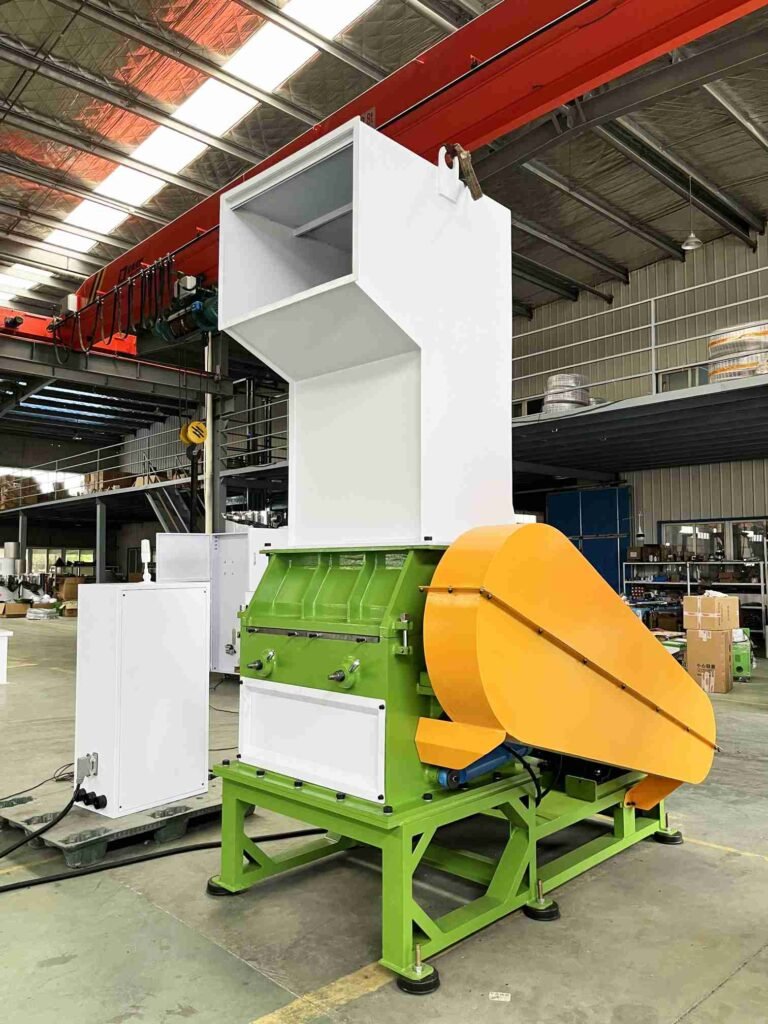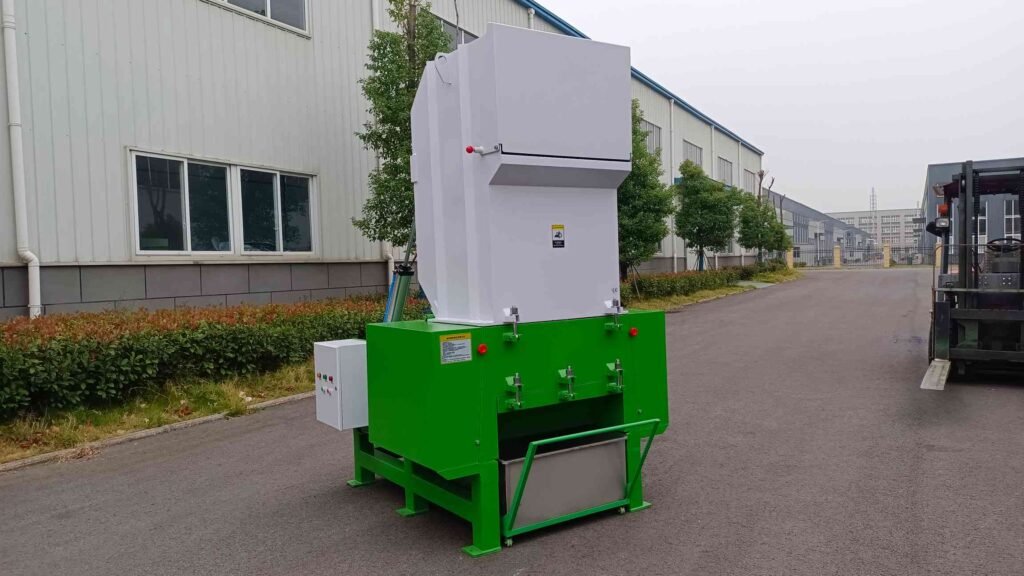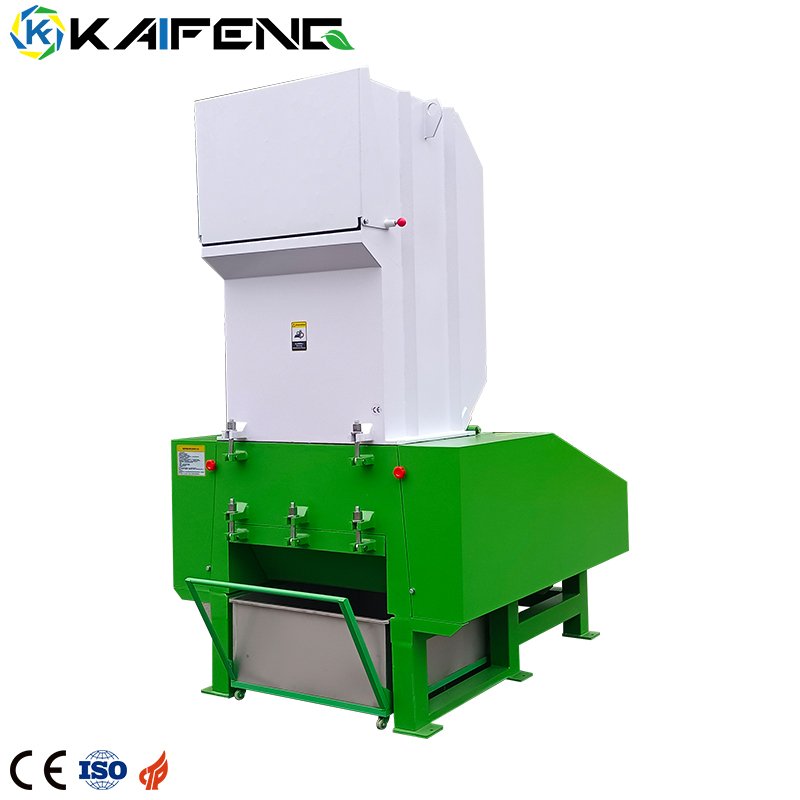Dada a importância crescente dos cuidados de saúde sustentáveis, a gestão eficaz do aumento dos resíduos de plásticos médicos tornou-se uma necessidade. A integração de um triturador de plástico de alto desempenho com equipamento auxiliar sob a forma de secador de caixa industrial, máquina de plástico, equipamento de moldagem de plástico, refrigerador arrefecido a água, refrigerador arrefecido a ar e carregador de pó está a transformar os processos de tratamento de resíduos. Seguem-se descrições pormenorizadas desta nova aplicação e da forma como estas tecnologias convergem para impulsionar a gestão de resíduos hospitalares.

I. Introdução
Os resíduos hospitalares são constituídos por vários tipos de plásticos descartáveis produzidos diariamente nos hospitais. A má gestão está a colocar em risco a saúde pública e o ambiente. A eficácia do tratamento é aumentada através da utilização de um triturador de plástico, na medida em que reduz o volume de resíduos e permite um processamento posterior mais fácil.
1. Papel da máquina trituradora de plástico nos resíduos hospitalares
O triturador de plástico tritura eficazmente resíduos plásticos médicos volumosos em tamanhos manejáveis para facilitar a esterilização, o transporte e a reciclagem. A sua utilização facilita a eliminação e o manuseamento de materiais infecciosos.
2. Importância do equipamento auxiliar
As máquinas auxiliares, como o secador de caixas industriais e a máquina de plástico, facilitam a reciclagem do plástico triturado em matérias-primas recicláveis. Os sistemas de arrefecimento, como o refrigerador arrefecido a ar e o refrigerador arrefecido a água, mantêm a eficiência do equipamento e evitam o sobreaquecimento com uma utilização prolongada, assegurando um processo de produção sem problemas.
3. Vantagens ambientais e operacionais
A combinação destas tecnologias reduz os riscos de contaminação, reduz as despesas de tratamento e promove os cuidados de saúde ecológicos. A estratégia sinérgica ajuda os hospitais a cumprir a regulamentação, bem como a promover programas globais de sustentabilidade.

II. Natureza e tipo de resíduos de plásticos para fins médicos
É necessário conhecer a natureza dos resíduos de plásticos para fins médicos, a fim de desenvolver tecnologias de tratamento adequadas. Os resíduos de plásticos para fins médicos consistem principalmente em artigos descartáveis de utilização única que estão contaminados por agentes patogénicos. O seu material variado exige procedimentos especiais de tratamento e reciclagem. Redução do volume com um triturador de plástico máquina é necessário de modo a que uma gestão eficaz possa facilitar a conversão dos resíduos perigosos em material reutilizável e reciclável.
1. Tipos de resíduos plásticos hospitalares
Os resíduos gerais incluem seringas descartáveis, tubos IV, materiais de embalagem, luvas de utilização única e batas de proteção. Estes materiais, que estão ocasionalmente contaminados, devem ser eliminados para evitar riscos de infeção.
2. Riscos de infeção e tipo de materiais
O risco de contaminação com agentes altamente biológicos, como vírus e bactérias, torna o manuseamento seguro muito crucial. Além disso, os próprios plásticos têm outros polímeros, como o PVC, o PE e o PP, com diferentes caraterísticas mecânicas e químicas que afectam a reciclabilidade.
3. Desafios em termos de volume e manuseamento
Embora leves, os plásticos médicos ocupam muito espaço e tornam complexa a logística de armazenamento e transporte. Devem ser triturados por um triturador de plástico para maximizar o espaço e permitir um tratamento de resíduos mais fácil e seguro.
III. Regras e regulamentos relativos à eliminação de resíduos hospitalares
Os resíduos hospitalares são regidos por regulamentos rígidos para promover a segurança e proteger o ambiente. O pessoal médico deve cumprir a legislação nacional e internacional que obriga à separação, transferência segura e eliminação. Equipamentos como triturador de plástico e equipamento de moldagem de plástico devem ser certificados para cumprir as normas de segurança e ambientais.
1. Requisitos regulamentares
Os resíduos hospitalares têm de ser tratados ao abrigo de regulamentos legais que tendem a exigir a separação dos resíduos, o confinamento e o tratamento dos resíduos para reduzir o risco de danos para a saúde.
2. Normas para o equipamento
Tratamento de resíduos utilizando equipamentos aprovados como trituradores de plástico para uso médico e máquinas de moldagem de plástico garante que o tratamento de resíduos está em conformidade com as normas de segurança e ambientais que protegem os trabalhadores e a sociedade.
3. Rastreabilidade
A rastreabilidade e a manutenção de registos pormenorizados durante a eliminação permitem a responsabilização e facilitam a auditoria, permitindo que as instituições se mantenham em conformidade e maximizem a transparência do processo.
IV. Conceção técnica e caraterísticas das trituradoras de plásticos para uso médico MÁQUINA
A conceção técnica da máquina trituradora de plástico medicinal determinará a sua segurança e eficiência no tratamento dos resíduos.
1. Mecanismo de trituração eficiente
O triturador de eixo duplo para serviços pesados com lâminas de liga metálica pode triturar plásticos de grau médico duros e sujos de forma rápida e eficaz, reduzindo-os a um tamanho uniforme pronto para processamento.

2. Caraterísticas de segurança e higiene
As portas de alimentação cobertas reduzem a exposição a produtos perigosos e os sistemas automáticos de extração de poeiras incentivam um ambiente de trabalho limpo, reduzindo a contaminação do ar.
3. Funcionamento eficiente do triturador de plástico
Refrigerantes incorporados em máquina trituradora de plástico potente evitam o sobreaquecimento durante uma utilização prolongada. Os plásticos triturados são fornecidos à fase de tratamento seguinte por carregadores de pó automáticos, poupando trabalho e aumentando a produtividade do fluxo de trabalho.
V. Fase de trituração na gestão de resíduos hospitalares
A trituração é uma fase essencial para transformar os resíduos em formas adequadas para posterior processamento ou reciclagem.
1. Pré-triagem antes da trituração
A pré-triagem eficaz remove o material não plástico que pode danificar o triturador ou contaminar os reciclados, permitindo um funcionamento sem problemas e resultados de qualidade.
2. Secagem de plásticos triturados
O secador de caixas industrial remove o teor de humidade dos plásticos triturados para evitar o crescimento microbiano e melhorar a estabilidade do material para reciclagem.
3. Reciclagem com equipamento de moldagem
Os plásticos processados são transformados por máquinas de plástico e máquinas de injeção de plástico em produtos reutilizáveis, como bandejas ou recipientes médicos, permitindo a eficiência dos recursos.
VI. Como é que a inovação tecnológica contribui para uma melhor gestão dos resíduos
A tecnologia promove a segurança, reduz os custos e optimiza a sustentabilidade. Os trituradores de plástico da próxima geração têm sensores inteligentes para monitorizar o desgaste das lâminas e as temperaturas de funcionamento, o que proporciona uma manutenção preditiva e uma maior segurança. A integração do fluxo do processo de trituração, secagem, manuseamento automático de materiais com o auxílio de carregadores de pó e arrefecimento com refrigeradores arrefecidos a água ou a ar maximiza os processos e reduz as despesas de mão de obra.
1. Operações mais inteligentes
A monitorização e a automatização em tempo real aumentam a fiabilidade e a segurança do equipamento, reduzem o tempo de inatividade e os custos de manutenção.
2. Custos de tratamento mais baixos
Os sistemas integrados de trituração interna, secagem e transporte de material reduzem os custos de manuseamento manual, transporte e energia, melhorando a eficiência operacional global.
3. Permitir hospitais ecológicos
Ao converterem os resíduos em material reutilizável e ao reduzirem a pegada ambiental, estes tipos de soluções tecnológicas permitem que os hospitais cumpram os objectivos de sustentabilidade e as normas regulamentares.
VII. Conclusão
As novas aplicações do triturador de plástico e do equipamento auxiliar, como o secador de caixa industrial, o carregador de plástico, o carregador de pó, o refrigerador refrigerado a água, o refrigerador refrigerado a ar e as máquinas de moldagem de plástico estão a transformar a eliminação de resíduos hospitalares. Estão a melhorar a segurança, a eficiência e a sustentabilidade nas instalações de saúde, permitindo uma boa gestão ambiental e práticas de saúde ecológicas.
